It was a moment of “unbelievable joy” for the parents of one-year-old twins conjoined at the head after a medical team at Soroka-University Medical Center in Israel successfully performed the first-of-its-kind rare surgery in the country. The planned procedure demanded hundreds of hours of preparation and the help of virtual reality (VR) and sophisticated 3D models for the doctors to practice on, provided by additive manufacturing pioneer Stratasys.
The medical team conducted a marathon “life or death” surgery on the infant patients that lasted twelve hours, led by world authority on conjoined twins Dr. Noor Ul Owase Jeelani, a Kashmir-born pediatric neurosurgeon at the Great Ormond Street Hospital (GOSH) in London and founder of Gemini Untwined, a UK Charity set up for the treatment, education, and research of conjoined twins.
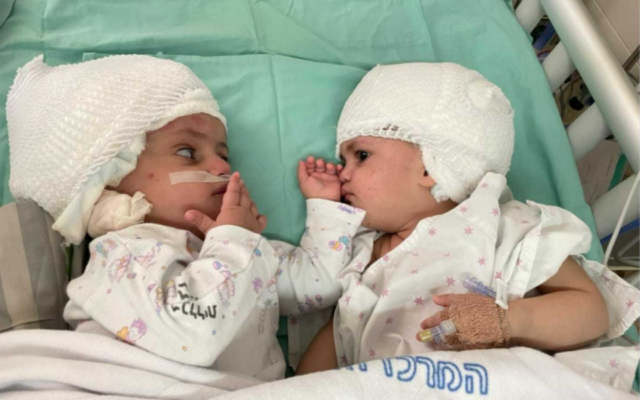 Newly separated conjoined twins at Soroka University Medical Center in Israel, look at each other for the first time on September 5, 2021. Image courtesy of Soroka University Medical Center
Newly separated conjoined twins at Soroka University Medical Center in Israel, look at each other for the first time on September 5, 2021. Image courtesy of Soroka University Medical CenterApart from the extremely complex operation, physicians told media site The Times of Israel that the babies were connected by the back of their heads – a condition called craniopagus twins – in an area where there was no skin and no skull, which posed an additional challenge for the treatment team. In fact, they had to grow more skin during the months prior to the operation. To do this, the medical team decided to insert inflatable silicone bags into adjacent parts of the twin’s heads, between the scalp and the skull, and start growing skin on top of them.
The center’s pediatric intensive care unit (ICU) director, Dr. Isaac Lazar, said to the Israeli online publication that every few days, sterile water was injected into the bags, increasing their volume, which stretched the skin slowly. After five to six months, these water-filled bags and the skin covering them became as big as the babies’ heads. Once the “balloons” were ready, the babies were admitted for surgery.
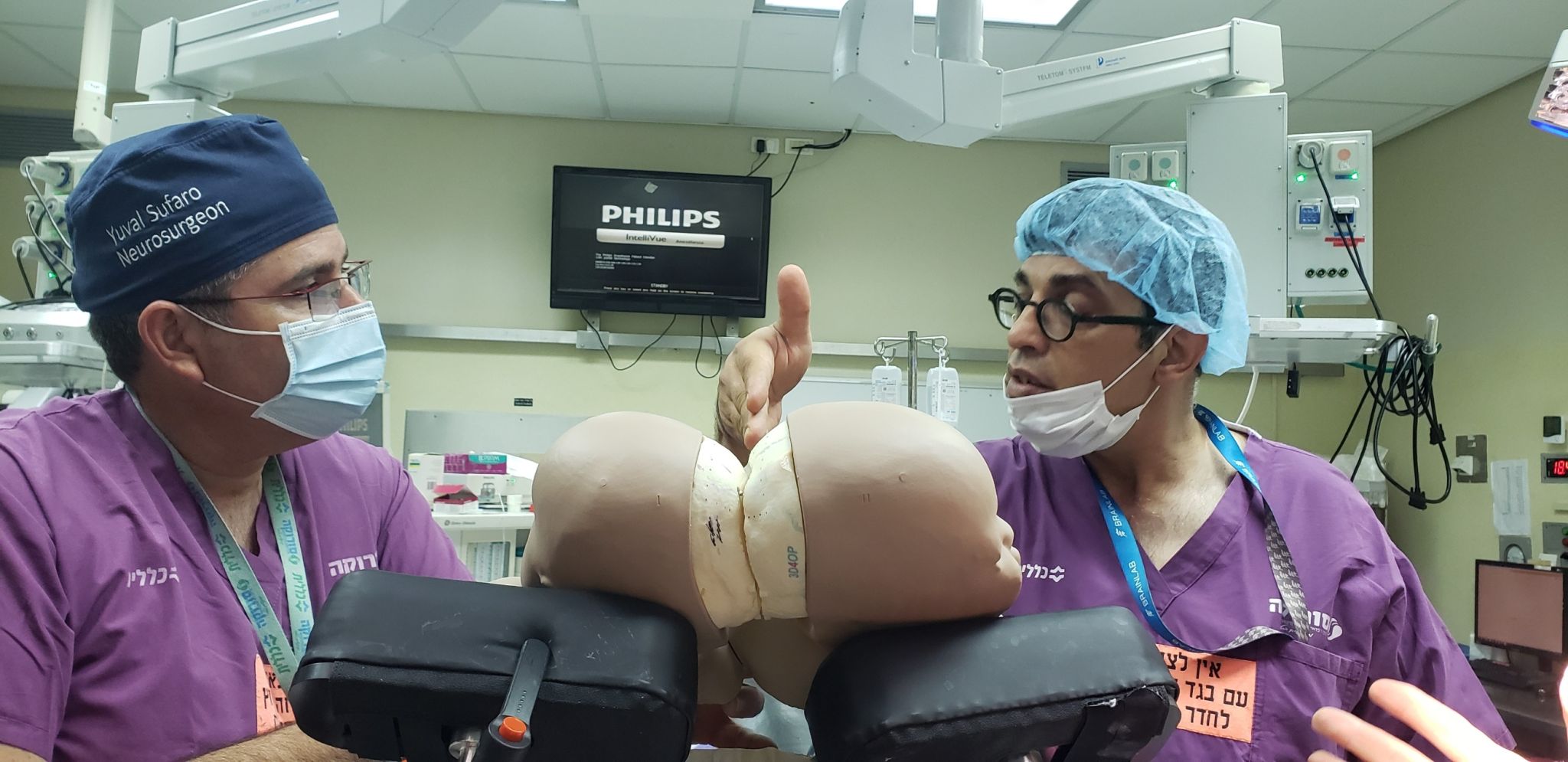 Israeli surgeons plan a 12-hour surgery for conjoined twins using 3D printed models. Image courtesy of 3D4OP/Soroka-University Medical Center.
Israeli surgeons plan a 12-hour surgery for conjoined twins using 3D printed models. Image courtesy of 3D4OP/Soroka-University Medical Center.Conjoined twins are already extremely rare, occurring at a rate of about 1 in 2.5 million births worldwide. But craniopagus twins are even more uncommon, with only 5% of conjoined twins born fused at the head. In addition, they often share large dural sinuses and vascular structures, making surgeries to separate them extremely difficult.
The Israeli medical team headed by Dr. Michael Gideon, Director of pediatric neurosurgery at the Soroka University Medical Centre, has worked with the patients’ parents since birth. Gideon described in his LinkedIn account that planning the operation took an entire year and thanked his dedicated team as well as “the amazing Israeli Medtech startups” that helped with the precise 3D models and VR of the twins for simulation and planning before and during the procedure.
“This is a very rare operation, performed so far in the world only about 20 times and for the first time in Israel in one-year-old babies, one of the youngest in which this procedure was performed,” said Gideon. “The next few days will be critical in the process of the twins’ recovery.”
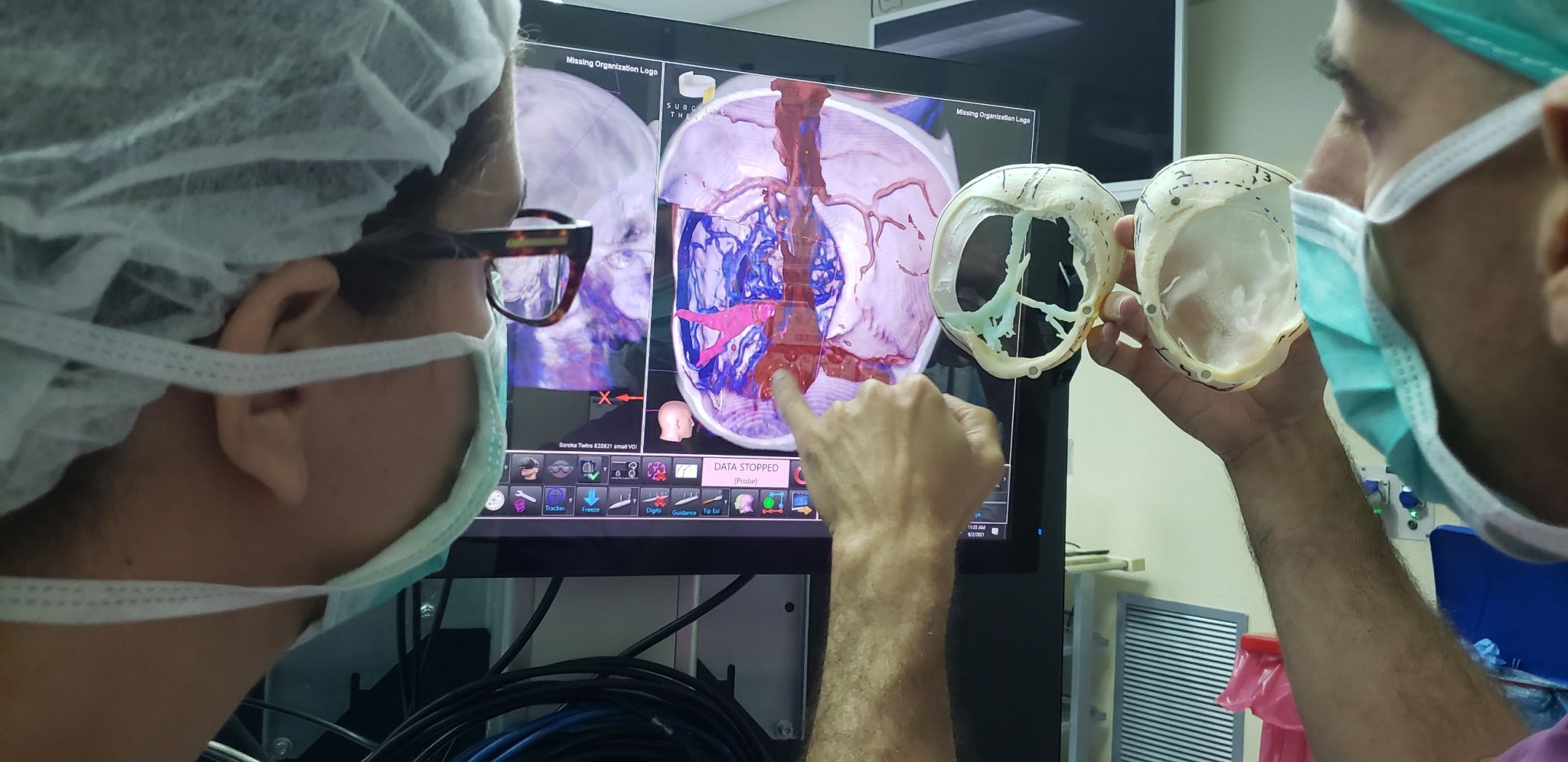 Israeli surgeons plan a 12-hour surgery for conjoined twins using 3D printed models. Image courtesy of 3D4OP/Soroka-University Medical Center.
Israeli surgeons plan a 12-hour surgery for conjoined twins using 3D printed models. Image courtesy of 3D4OP/Soroka-University Medical Center.Assisting the surgeons with the pre-surgical planning process was ISO-certified medical device startup 3D4OP, Stratasys, and Surgical Theater, a U.S. business that markets a surgery rehearsal platform (SRP) for neurosurgical pre-operative planning. 3D4OP Founder and CEO Limor Haviv worked with Gideon to design 3D printed anatomical models to guide the intervening surgeons throughout the surgery. With specialists from many medical disciplines, like neurosurgery and plastic surgery, coming together for one surgery, the 3D models became a key convergence point.
Based on computerized tomography (CT) and magnetic resonance imaging (MRI) scans and using Materialise 3-Matic medical software, the 3D models were printed using different technologies, described Haviv, and incorporated different materials to mimic the anatomical tissues. The models were then used to simulate the operation, so surgeons could visualize how the actual separation would be performed.
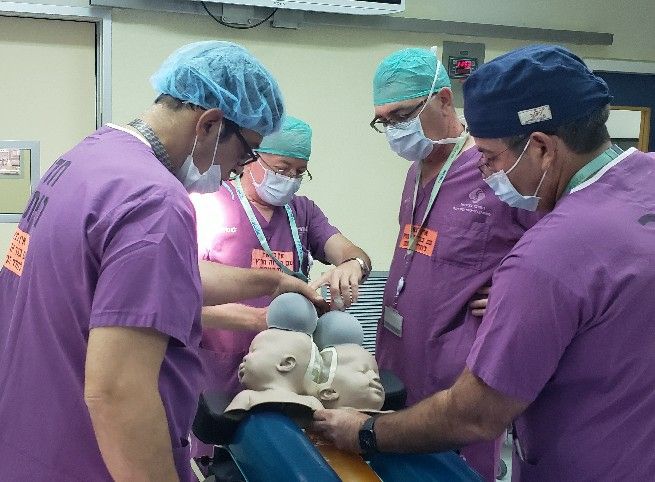 Israeli surgeons plan a 12-hour surgery for conjoined twins using 3D printed models. Image courtesy of 3D4OP/Soroka-University Medical Center.
Israeli surgeons plan a 12-hour surgery for conjoined twins using 3D printed models. Image courtesy of 3D4OP/Soroka-University Medical Center.The 3D models allowed them to discern blood vessels from the dura tissue (a thick membrane surrounding the brain), skull, and skin, just like in the actual procedure. Moreover, Haviv said the models were so realistic that they could even be positioned in the same way as the twins would be in the actual operating room (OR), allowing simulation rehearsals for the anesthesiologists. Aside from Stratasys, Haviv and 3D4OP also worked with local rapid prototyping company Laser Modeling Israel and industrial design startup Synergy.
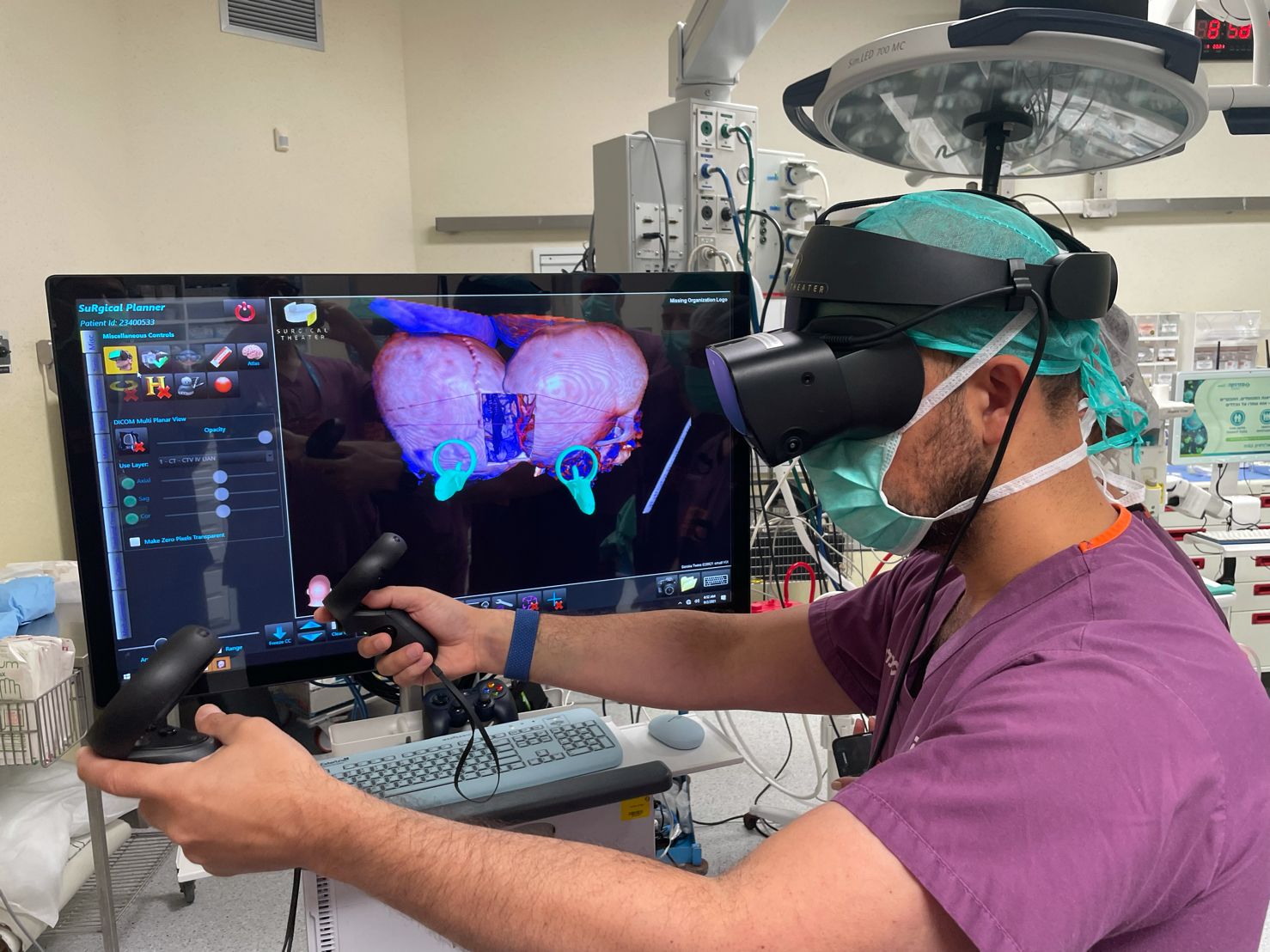 Dr. Michael Gideon simulates the surgery using VR. Image courtesy of Michael Gideon.
Dr. Michael Gideon simulates the surgery using VR. Image courtesy of Michael Gideon.Performed early in September 2021, the surgery was extremely delicate, as bleeding from major blood vessels in the babies’ heads could have caused a catastrophic result. However, the surgeons said they were confident having rehearsed using 3D printed models and VR. After the massively complex operation, the twins were moved to the ICU, where they first looked at each other and cooed. As the twins recovered from the surgery, Gideon revealed that they were both “conscious and alert and neurologically intact” and started physical therapy roughly a week after the operation. The twins are now expected to lead normal lives.
Subscribe to Our Email Newsletter
Stay up-to-date on all the latest news from the 3D printing industry and receive information and offers from third party vendors.
You May Also Like
3D Printing News Briefs, April 27, 2024: Research, Digital Dentistry, Cycling, & More
We’re starting today’s 3D Printing News Briefs with some research into 3D printed luminescent quantum-dot polymer architectures and free-form laser beam shaping, and then on to an open source 4-axis...
HP & INDO-MIM Collaborate to Boost Metal 3D Printing in India
HP Inc. and INDO-MIM, a US- and India-based supplier of metal injection molding (MIM) powders and contract manufacturer, have announced that the two companies will collaborate to accelerate additive manufacturing...
3D Printing News Briefs, February 17, 2024: Shot Blasting, Service Bureaus, & More
In today’s 3D Printing News Briefs, we’re starting out with post-processing, as SKZ Würzburg is using a shot blast system from AM Solutions for its research. Moving on to business,...
3D Printing News Unpeeled: Not That Kind of Organ 3D Printing
GKN Aerospace will create a 150 jobs in Trollhattan Sweden with an investment of $60 million part of which comes from the Swedish Energy Agency’s Industriklivet initiative. The investment will...






























